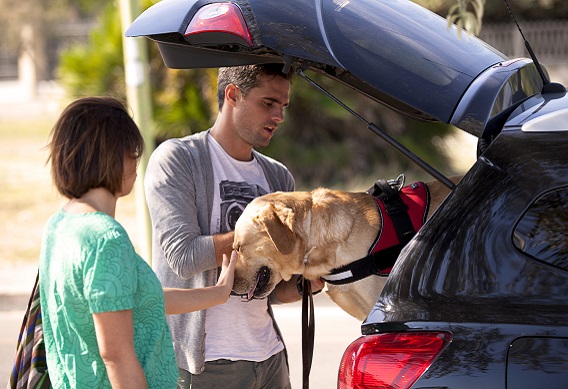Pet Sitters International advises pet owners to consider their pets when creating disaster plans
This National Preparedness Month, remember:
Preparing for disaster can save your pet’s life.

As Louisiana residents cope with the devastation wrought by recent widespread flooding, many people in other parts of the country will ask themselves, “What would I do if I needed to evacuate my home?”
This September is National Preparedness Month, and Pet Sitters International (PSI), the world’s leading educational organization for professional pet sitters, urges pet owners to prepare for disaster and to remember that “no pet left behind” is the best policy to avoid potential injury and death.
According to the American Pet Products Association, 65 percent of U.S. households own a pet.
“Creating a disaster plan is an important step that residents need to take to prepare for an emergency situation, but pet owners need to make sure that they take their pets into account,” advises Patti J. Moran, PSI president and founder.
PSI is offering three tips for creating a pet-friendly disaster plan:
1. Find a safe place for your pet to go. Most Red Cross disaster shelters cannot accept pets because of state health and safety regulations and other considerations. Research your local community resources to see which shelters may allow pets, or find pet-friendly hotel options on your evacuation route. Consult with professionals, such as your veterinarian or professional pet sitter, or out-of-town family and friends to identify a safe place for your pet in the event of a disaster. Have this information handy should you need to evacuate on short notice.
2. Assemble a portable pet disaster supplies kit. Whether a disaster keeps you from your home for days or weeks, you will need essential supplies to care for your pets. Keep items such as crates, food and water bowls, collars, leashes, a photo of you with your pets and important veterinary and vaccination records in a sturdy, waterproof storage container that you can carry easily. Make sure that each pet crate is marked with your pet’s name, your name and contact information.
3. Identify a backup pet caretaker. Identify an alternate caretaker, such as your professional pet sitter or a neighbor, who can care for your pets if disaster strikes when you are away from home or if unforeseen circumstances prevent you from returning home to rescue your pets. Make sure the selected person is aware of your disaster plan and can easily locate your pets and pet disaster supplies kit in your home. Put this plan in writing as the caretaker may need to show proof of your permission to access your home in your absence. Include written permission to get emergency veterinary treatment for the pets in your absence. And if a pet has a favorite hiding place that it seeks when it is scared or upset, be sure the caretaker has that information. If you are using the services of a professional pet sitter, also be sure to inquire about his or her company’s disaster plan.
FEMA’s website Ready.gov also advises pet owners to ID their pets, which would be of critical importance if you got separated from your pets. Make sure the pets’ tags are up-to-date and securely fastened to their collars. If possible, add the address and phone number of your evacuation site. You should also consider microchipping your pets.
For more information about National Preparedness Month and how to prepare for disaster, visit Ready.gov.
Pet sitters who want to learn more about preparing for a disaster can visit The PSI Blog. PSI has also released a new Ebook, What every professional pet sitter should know about disaster planning. The Ebook is available for purchase on the PSI website.
To learn more about PSI or to locate a professional pet sitter in your area, visit http://www.petsit.com






